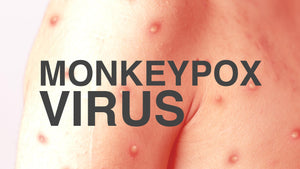
Safely Disposing Needles and Sharps
In a 2012 study by the University of Nevada at Las Vegas, it was found that 12% of all HIV infections were associated with the unsafe use of injections. The same study also concluded that 46% of cases of Hepatitis B and 38% of Hepatitis C cases also occurred due to the reuse of needles and syringes. Injecting equipment typically consists of three parts – The needle with the hub, the syringe, and the cap. It is a common practice amongst the unaware and ignorant population where the needle is discarded, but the syringe is re-used. This is extremely dangerous and can spread various blood borne diseases. Additionally, manual sorting of wastes by waste handlers at disposal devices also poses a huge risk for needle stick injuries. In several clinics across India, the syringes are re-used on a regular basis by the health care staff. In fact, it’s not just a small number of individuals who resort to reusing of biomedical waste – there is a grey market that thrives on selling used biomedical equipment that makes its way to unsuspecting patients. While in 2017, Karnataka became the first Indian state to safely dispose of all biomedical waste at their Public Health facilities, it is imperative that the rest of India catches up. Using a Sharps and Needles Disposal device is essential for the safe disposal of sharps and needles. A needle and sharp disposal device consist of an opening from where the waste is collected, a flap to close the opening, a detachable, and an airtight lid. Typically, for 25-30 needles a 300ml box is used, for 45-50 needles a 500ml box is used while for 75-80 needles a 1-liter box is used. Sharps and needles must never be thrown in trash cans as they pose the risk of puncture injuries and needle stick injuries. It is commonly seen in some clinics and healthcare setups where the sharps and needles are disposed of in the same vessel as the regular trashcan and are picked up the next day along with other non-biomedical waste. This is extremely dangerous – to the staff at the clinic, to the patients, to the waste pickers as well the environment. Ideally, sharps and needles disposing of the device should have the following features –
- Puncture Resistance – The needle disposal device shouldn’t be punctured by the needles as it fills up. It should resist any damage and avoid any perforations. Puncture resistance allows for proper containment of used sharps and needles thereby reducing the chance of injuries and transmission of infection.
- Durability – The needle disposal device should be durable and not get dents or breaks before it’s disposed of safely. The durability allows the sharps and needle disposal device to endure pressure and stress it might encounter during its transportation to a disposal site.
- Leakage proof – The contents of the needle disposal device shouldn’t leak. Many sharps and needle collecting devices that are used for the purpose of collecting needles used in the collection of sharps having trace chemotherapy waste and pharmaceutical sharps usually have a gasket that further prevents leakage.
- Easily visible – The needles and sharps disposal devices should be easily visible and clearly be marked as hazardous collection devices. It should be placed at every injecting site, but away from any possible danger that can damage it. It should only be accessed by authorized personnel and healthcare staff.
- Accessible – The needles and sharp disposal device should be accessible to each and every staff member responsible for administering injections and disposing of syringes and sharps. Though sharps and needles devices are easy to use and require no pre-requisite knowledge about it, it is advisable that the staff is shown a demonstration to ensure proper use of the device.
- Locking Cabin Compatibility – Compatibility to locking cabins ensures that no one accesses these sharps and needles before they can be safely transported and disposed of safely.
- Hands-Free Disposal – Hands-free disposal allows for safer disposal without the risk of needle stick injuries.
- Puncture Resistant Lids – Sharps and needles disposal containers should have puncture-resistant lids that do not allow the sharps to stick out of the box and prevent spillage in case of being dropped.
- Quality – Since sharps disposal devices safeguard the healthcare staff, protect the patients, prevent potential injuries to waste pickers and allow for safe disposal of the sharps and needles, it is imperative to invest in a sharps and needles collection device that is manufactured with superior quality raw materials and offer durability such as those from Becton Dickinson (BD).
- Chemotherapy Sharp Container – Chemotherapy Sharps containers are used for disposal of sharps and syringes that have been used while administration of chemotherapy drugs. It securely stores sharps and needles containing trace amounts of chemotherapy wastes and is yellow colored to indicate that trace amounts of chemotherapy waste is present inside the container.
- Phlebotomy Sharps Collector – These containers provide a safe storage place for blood contaminated sharps and needles.
- Pharmaceutical Sharps Collector – These sharp collectors are used to collect non-hazardous pharmaceutical waste and are color-coded with a blue lid. It is equipped with a gasket to prevent leakage.
- Patient Room Sharp Collectors – These sharps containers are used to collect sharps and needles that are to be disposed of after use on a patient.
- Hub Cutter – Hub cutters cut needles and syringes right at the hub. This ensures that no sharp remains and minimum splatter occur. These are found especially useful by vaccinators who need to frequently dispose of needles after use with ease and safely.







